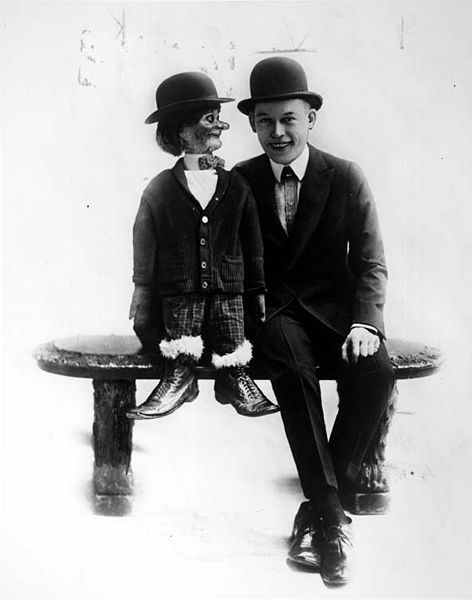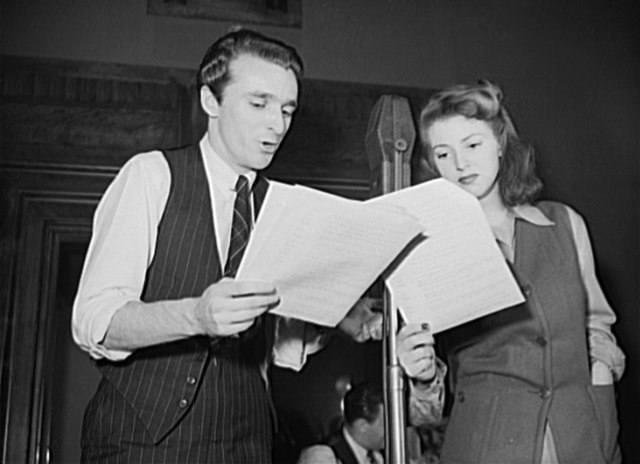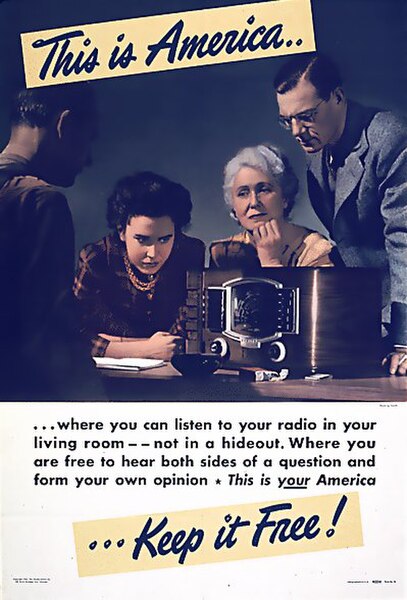John Florence Sullivan, known professionally as Fred Allen, was an American comedian. His absurdist topically-pointed radio program The Fred Allen Show (1932–1949) made him one of the most popular and forward-looking humorists in the Golden Age of American radio.
Fred Allen circa 1940
Fred Allen with dummy, circa 1916.
Wife Portland Hoffa, 1940
Fred Allen and wife Portland Hoffa, 1941
The Golden Age of Radio, also known as the old-time radio (OTR) era, was an era of radio in the United States where it was the dominant electronic home entertainment medium. It began with the birth of commercial radio broadcasting in the early 1920s and lasted through the 1950s, when television gradually superseded radio as the medium of choice for scripted programming, variety and dramatic shows.
Rehearsal for the World War II radio show You Can't Do Business with Hitler with John Flynn and Virginia Moore. This series of programs, broadcast at least once weekly by more than 790 radio stations in the United States, was written and produced by the radio section of the Office of War Information (OWI).
Radio-related World War II propaganda poster
The War of the Worlds radio broadcast by Orson Welles on electrical transcription disc







